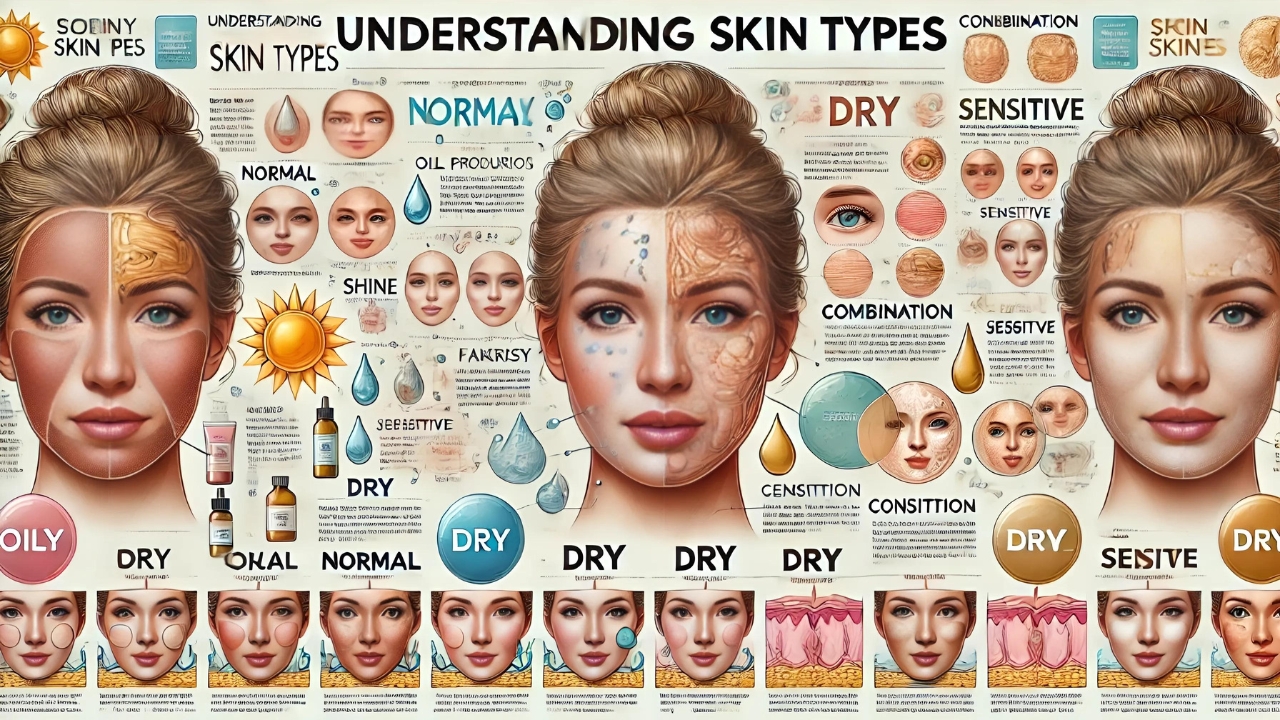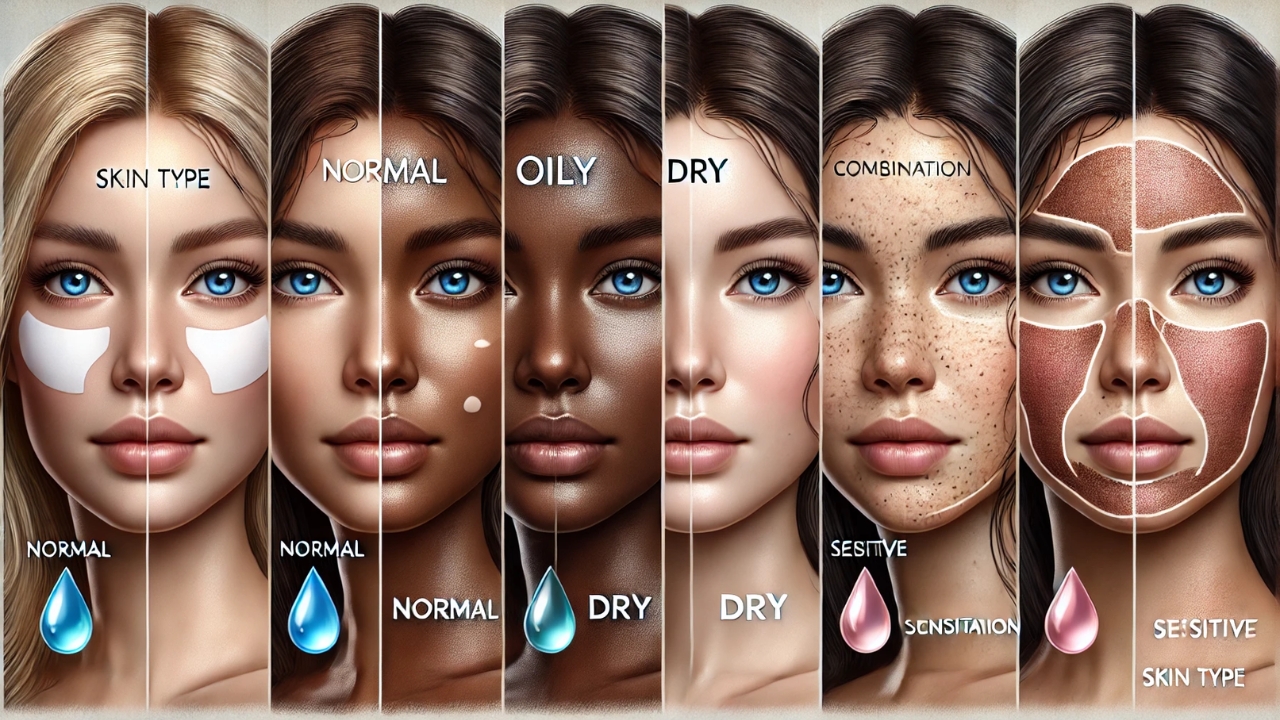Introduction to different skin types
determine Different Skin Types. Hey there, skincare enthusiasts! 🌟 If you’ve ever felt lost in the sea of skincare products, wondering why some make your skin glow while others leave you with breakouts or dry patches, you’re not alone. Determining your skin type is the key to unlocking the perfect skincare routine tailored just for you.
When you recognize your skin type, you can choose products that work harmoniously with your skin, helping you achieve that healthy, radiant complexion we all dream about. In this post, we’ll walk you through the process of identifying and understanding your skin type, so you can take your skin care game to the next level. Let’s dive in!
The Importance of Knowing Your Skin Type
Recognizing your skin type is like having the secret recipe for your favorite dish – it makes everything better! When you understand your skin’s unique needs, you can avoid the pitfalls of using products that aren’t suited for you.
Imagine putting a heavy cream on already shiny skin! That’s just asking for clogged pores and breakouts. Or using a mattifying toner on dry skin – cue the flakiness and irritation. By identifying your skin type, you’re setting the stage for a skin care routine that truly enhances your skin’s health and appearance. Tailored skincare isn’t just a luxury; it’s a necessity for achieving your best skin yet.
Overview of Common Skin Types
Let’s talk about the different skin types and what makes each unique. Understanding these basics will help you identify where your skin fits in and your skin condition.
Normal Skin:
Lucky you! Normal skin means your skin is balanced not too oily and not too dry. It’s the Goldilocks of skin types with minimal imperfections and a healthy glow. 🌟
Oily Skin:
If you often find your face looking shiny or your makeup sliding off by midday, you likely have greasy skin . This skin type produces excess sebum, leading to enlarged pores and a tendency for breakouts.
Dry Skin:
Dry skin often feels tight and can look flaky or rough. It lacks moisture, which can make it prone to irritation and a dull appearance. Hydration is key for this skin type.
Combination Skin:
A mix of oily and dry? That’s combination skin for you! Typically, it features an oily T-zone (forehead, nose, chin) with dry or normal cheeks. It requires a bit of a balancing act to manage both areas effectively.
Sensitive Skin:
This skin type is easily irritated and can react to products, weather, or even stress. If you find your skin often looks red or feels itchy, easily irritated skin might be your category. It requires gentle care and careful product selection.
How to Identify Your Skin Type
Wondering how to determine which skin type you have? Here are some simple tests you can do at home to get started.
The Bare-Faced Test:
Start with a clean face. Wash your face with a gentle cleanser, pat it dry, and leave it bare without any products for a few hours. After waiting, take a look at how your skin feels and looks. If it’s shiny, you may have greasy skin; if it feels tight or flaky, you might have dry skin; a combination of both could indicate combination skin. If you feel normal with no noticeable issues, you might have normal skin.
The Blotting Sheet Test:
This test is perfect for identifying oily skin. Take a blotting sheet and gently pat different areas of your face. If the sheet picks up oil from all areas, you have greasy skin. If it’s only oily in the T-zone, you’re likely in a combination. If there’s little to no oil, you might have dry or normal skin.
Professional Assessment:
Still unsure? It might be time to consult a dermatologist or skincare professional. They can provide a thorough analysis of your skin type and offer expert advice on the best skincare regimen for you.

Understanding Your Skin Type: Key Factors to Consider
Skin type isn’t just about genetics; it’s influenced by various factors. Here’s what to consider:
Genetics: Your genes play a big role in your skin type. If your family members have oily skin, you’re more likely to have it too.
Environment: The climate you live in and the quality of the air around you can greatly impact your skin. For example, living in a humid area might make your skin more oily, while dry climates can exacerbate dryness.
Lifestyle and Diet: What you eat and how you live also affect your skin. A diet high in sugar and refined carbs can lead to shiny skin and acne, while staying hydrated and eating a balanced diet can promote healthier skin. Stress, lack of sleep, and smoking can also affect your skin’s appearance and health.
Age: As we age, our skin changes. You might notice your skin becoming drier or more sensitive over time. Aging skin tends to lose elasticity and moisture, which means your skincare routine needs to evolve as you do.
Tailoring Your Skincare Routine Based on Your Skin Type
Now that you’ve identified your skin type, let’s talk about how to create a skin treatment protocol that suits you perfectly. Here’s a breakdown for each skin type:
Normal Skin:
Lucky you! With normal skin, maintaining balance is key. Stick to a simple routine: a gentle cleanser, a lightweight moisturizer, and sunscreen. You can also use a mild exfoliant once a week to keep your skin glowing. 🌟
Oily Skin :
The goal here is to control excess oil without stripping your skin of its natural moisture. Use a foaming cleanser to remove excess oil, and opt for oil-free, non-comedogenic moisturizers. Incorporate products with salicylic acid or benzoyl peroxide to help manage breakouts. Don’t forget to use a broad-spectrum sunscreen that won’t clog your pores.
Dry Skin :
Focus on hydration and moisture retention. Use a creamy, hydrating cleanser and a rich moisturizer that contains ingredients like hyaluronic acid, glycerin, or ceramides. Avoid hot showers and harsh exfoliants, as they can strip your skin of its natural oils. Always apply a thick layer of moisturizer while your skin is still damp to lock in hydration.
Combination Skin :
Managing combination skin can be a bit tricky, but it’s all about balance. Use a gentle cleanser that can clean both oily and dry areas without causing irritation. Apply a lightweight moisturizer on oily areas and a richer cream on dry patches. You might also want to use different treatments for different areas—such as a mattifying lotion on your T-zone and a hydrating serum on your cheeks.
Sensitive Skin :
Less is more when it comes to sensitive skin. Choose fragrance-free, hypoallergenic products that are formulated for easily irritated skin. A gentle cleanser, soothing moisturizer, and a mineral-based sunscreen are your best friends. Avoid products with alcohol, fragrances, or harsh chemicals that could irritate your skin.
Common Skincare Mistakes Based on Skin Type
Even with the best intentions, it’s easy to make mistakes that could hinder your skincare goals. Let’s explore some common errors and how to avoid them:
Over-cleansing Oily Skin:
It might seem like a good idea to wash your face frequently if it’s oily, but over-cleansing can strip your skin of its natural oils, causing it to produce even more oil. Instead, stick to washing your face twice a day with a gentle cleanser.
Using Harsh Products on Sensitive Skin:
Sensitive skin can react to harsh ingredients, leading to redness and irritation. Always patch-test new products and stick to those designed for easily irritated skin .
Neglecting Hydration for Oily Skin:
Many people with oily skin skip moisturizer, thinking it will make their skin less oily. However, lack of moisture can actually cause your skin to produce more oil to compensate. Opt for a lightweight, oil-free moisturizer to keep your skin hydrated without adding extra shine.
Ignoring Sunscreen:
Regardless of your skin type, sunscreen is a must. Sun damage can lead to premature aging, dark spots, and an increased risk of skin cancer. Choose a sunscreen that suits your skin type—gel-based for shiny skin, cream-based for dry skin, and mineral-based for easily irritated skin.
Tips for Adapting Your Skincare Routine Over Time
Your skincare needs will change over time due to various factors like age, climate, and lifestyle changes. Here are some tips for adapting your routine:
- Seasonal Changes: As the weather changes, so should your beauty regimen. In the winter, you might need a heavier moisturizer to combat dryness, while in the summer, a lighter moisturizer and additional sun protection might be necessary.
- Hormonal Changes: Hormonal fluctuations, such as those during menstruation, pregnancy, or menopause, can affect your skin type. Be ready to adjust your routine accordingly to address new concerns like increased oiliness or sensitivity.
- Traveling: When traveling, especially to a different climate, your skin might react differently. Pack travel-sized versions of your skincare essentials and consider bringing a hydrating mist or a calming serum to help your skin adjust.
Conclusion
determining your skin type is the first step towards a more effective and personalized beauty regimen. By knowing whether you have normal, oily, dry, combination, or sensitive skin, you can choose products that truly meet your skin’s needs and avoid those that might cause problems. Take the time to recognize your skin type accurately, and remember that your skin’s needs may change over time. Don’t be afraid to adjust your routine to keep your skin looking and feeling its best. 💖

